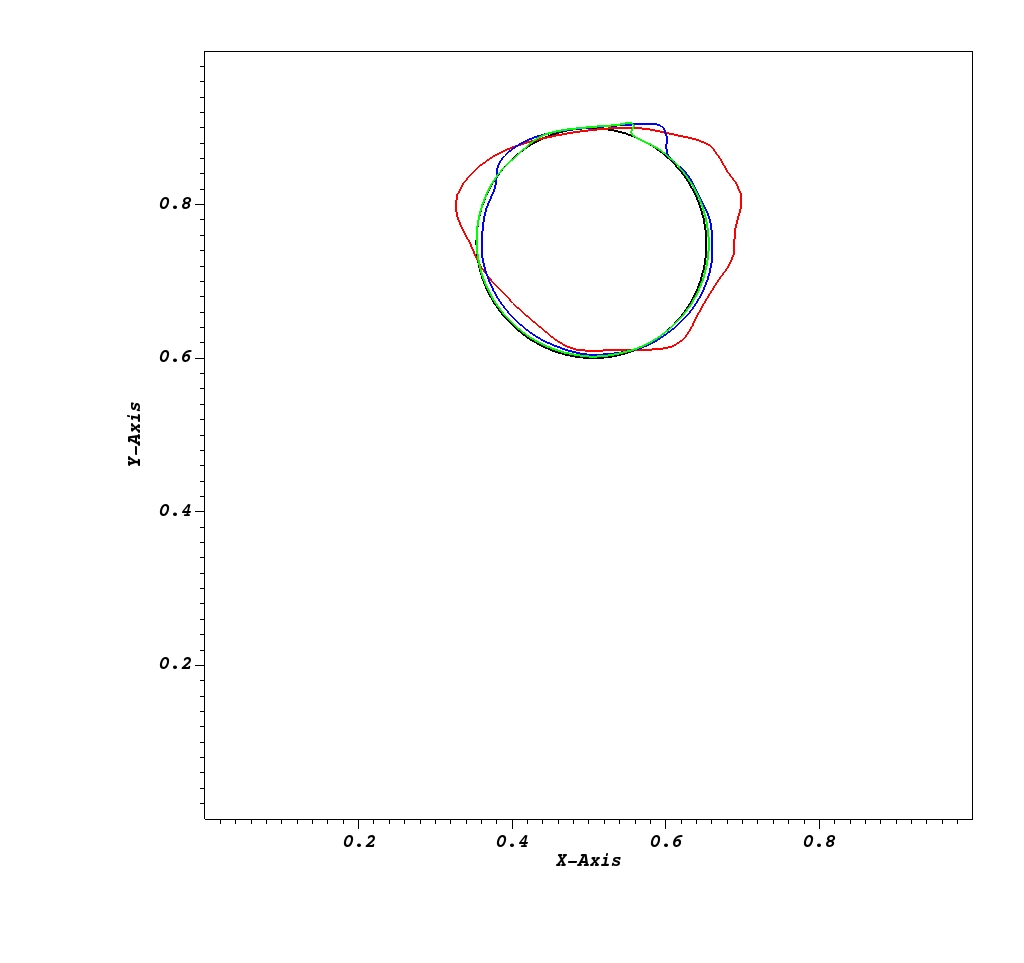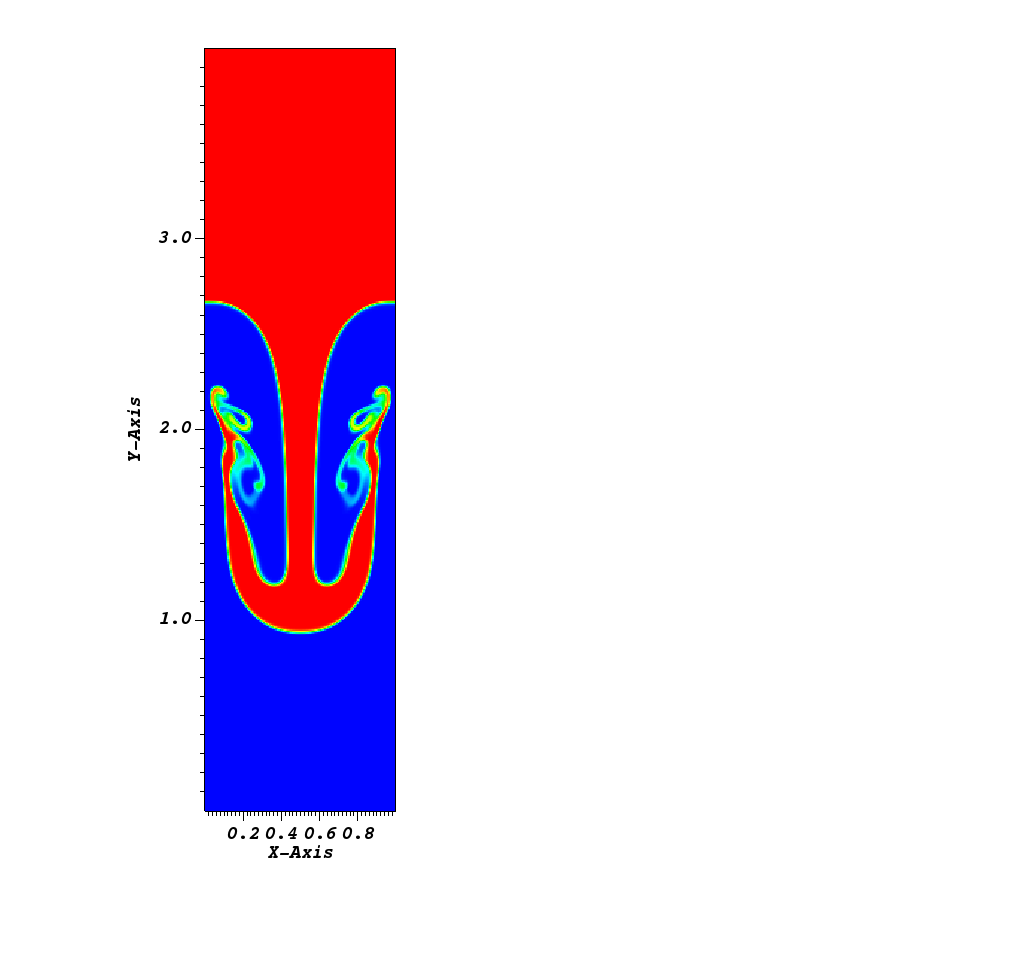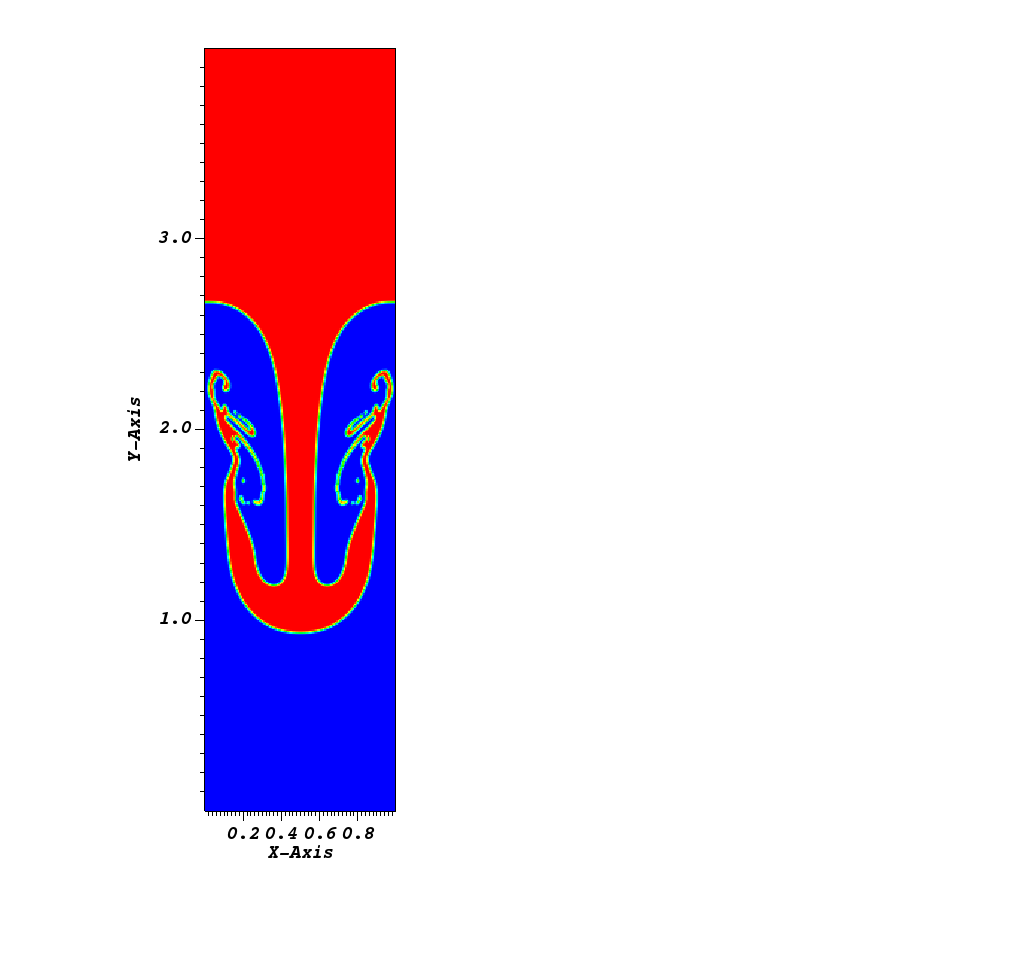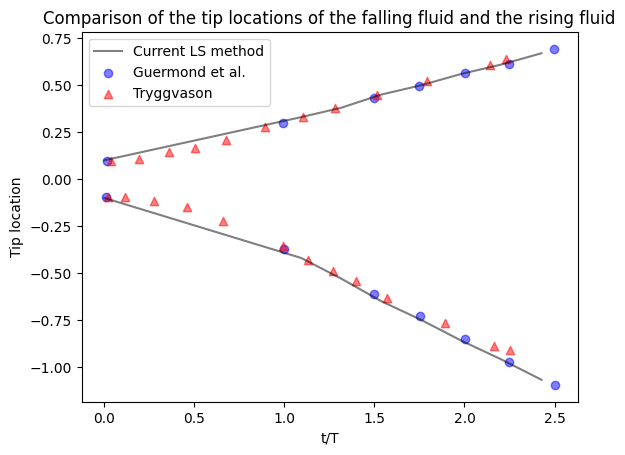This repo builds upon IAMR (https://amrex-codes.github.io/IAMR/) code that solves the multiphase incompressible flows. The Navier-Stokes euqations are solved on a semi-staggered grid using the projection method. The gas-liquid interface is captured using either the level set (LS) method or the conservative level set (CLS) method. The fluid-solid interface is resolved using the diffused immersed boundary method (DIBM). The particle-wall as well as the particle-particle collisions are also captured by the adaptive collision time model (ACTM). This code aims at simulating the multiphase flow and fluid structure interaction (FSI) problems on both CPUs and GPUs with/without subcycling.
- LS method and reinitialization schemes
- Diffused Immersed Boundary Method
- Particle Collision Algorithms

Profiles of drop interface in the RSV problem at t/T=1 after one rotation. Black line: Analytical Solution; Red line: 64*64; Blue line: 128*128; Green line: 256*256
Our code is rely on AMReX framework, you must download such repo as follow:
- AMReX:
git clone https://github.com/ruohai0925/amrex - AMReX-Hydro:
git clone https://github.com/ruohai0925/AMReX-Hydro - this repo:
git clone https://github.com/ruohai0925/IAMR/tree/development
After that, you will find three folder in your current directory:AMReX,AMReX-Hydro,IAMR.
We recommend using the GNU compiler to compile the program on the Linux platform. The compilation process requires preparing a make file, which you can find in the example folder under Tutorials. It is strongly recommended to use the GNUmakefile prepared in advance by the example.
For example, if we want to compile in the FlowPastSphere , refer to the following steps:
-
cdto the FlowPastSphere directorycd IAMR/Tutorials/FlowPastSphere -
Modify compilation parameters in
GNUmakefile.The compilation parameters depend on your computing platform. If you use
MPIto run your program, then setUSE_MPI = TRUE. If you are running the program withNvidia GPU(CUDA), then setUSE_CUDA = TRUE. When using GPU runtime, please make sure your CUDA environment is ok. For the compilation parameters in the file, you can find the relevant information in options. -
Compile
After preparing the above settings, you can compile the program:
make
You can add parameters after
make, such as-f your_make_fileto customize your parameter file, and-j 8to specify8threads to participate in the compilation.If the compilation is successful, an executable file will be generated. Usually the executable file is named in the following format:
amr[DIM].[Compiler manufacturers].[computing platform].[is Debug].ex.The executable file name of the Release version of the three-dimensional compiled using the GNU compiler in the MPI environment is:amr3d.GNU.MPI.ex.
you should takes an input file as its first command-line argument. The file may contain a set of parameter definitions that will overrides defaults set in the code. In the FlowPastSphere, you can find a file named inputs.3d.flow_past_spher, run:
./amr3d.GNU.MPI.ex inputs.3d.flow_past_spherIf you use MPI to run your program, you can type:
mpirun -np how_many_threads amr3d.GNU.MPI.ex inputs.3d.flow_past_spherthis code typically generates subfolders in the current folder that are named plt00000, plt00010, etc, and chk00000, chk00010, etc. These are called plotfiles and checkpoint files. The plotfiles are used for visualization of derived fields; the checkpoint files are used for restarting the code.
In the Tools folder, there are some post-processing script for DIBM. The postProcess submodule is used to process the generated particle data file. The specific usage can be seen in the README.
In addition, a Fortran code for generating a particle bed is provided, You can customize the domain size and particle size you want.
! Line 10 - 15
! domain scheme
LX_DOMAIN=3.0D0*Pi
LY_DOMAIN=6.0D0*Pi
LZ_DOMAIN=3.0D0*Pi
! D
SPD=1.D0Compile the code and run it, and a file named SPC.DAT will be generated, in which each line represents the position of a particle.
gfortran -o fixBed DomainFill.F90
./fixBed


